Inverters play a crucial role in any solar energy system, whether it’s a 2-kW residential system or a 5-MW utility power plant. (Tweet This)
An inverter’s basic function is to “invert” the direct current (DC) output of a photovoltaic (PV) system into alternating current (AC). AC is the standard used by all commercial appliances, which is why many view solar inverters as the “gateway” between the PV system and the energy off-taker.
Why do you need a solar inverter?
Inverters have evolved from providing just the one important function of inverting the electrical current to a number of other capabilities and services. Every inverter should provide options for extra tools and services such as data monitoring, advanced utility controls, applications, system design engineering and a host of other services—all to ensure the inverter can operate at an optimal performance level. This is crucial for project investors, EPCs, off-takers and utilities to get the most production from their investment in a solar energy system.
Furthermore, while solar inverters constitute a small percentage of the system’s cost, keeping them running as efficiently and reliably as possible is critical. Maximized inverter performance leads to more energy production, yielding better returns for project stakeholders. It is imperative that inverters are highly reliable, with ongoing data monitoring, preventative maintenance (PM), operations and maintenance (O&M) services, a quick mean time to repair (MTTR) and a proven and bankable warranty. All of these factors should be considered by anyone making a purchasing decision for a solar energy system.
What are the different types of solar inverters?
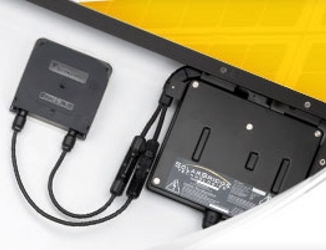 Microinverters are not a new concept. Since the earliest days of the PV industry, solar engineers and entrepreneurs have sought to create grid-compatible AC power direct from a solar panel. Some of the first commercial microinverters appeared in the mid-1990s, including the SunSine AC Module developed by Ascension Technologies. In fact, one of the first ACPV systems, delivered to the U.S. Pentagon in 1994, is still functioning today.
Microinverters are not a new concept. Since the earliest days of the PV industry, solar engineers and entrepreneurs have sought to create grid-compatible AC power direct from a solar panel. Some of the first commercial microinverters appeared in the mid-1990s, including the SunSine AC Module developed by Ascension Technologies. In fact, one of the first ACPV systems, delivered to the U.S. Pentagon in 1994, is still functioning today.
Microinverters all but disappeared from the market in the early 2000s, due to their high cost and relatively low efficiency. But over the last five years, rapid advances in semiconductor technology and improvements in efficiency and reliability have made microinverters a viable alternative to central inverters.
Manufacturers say the advantages of solar microinverters include a simplified design, installation, and most compellingly, improved uptime over other systems as there is no single point of failure in the PV system. System owners easily comprehend the bottom-line benefits of module-level monitoring and maximum power point tracking. It’s actually hard to understand how the rooftop PV industry has grown to the point it is today without system owners having regular awareness of how their own systems are performing.
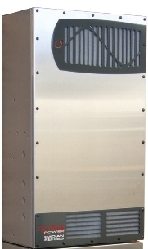 Off-Grid inverters are already multitaskers: combination inverter/chargers with bi-directional energy capabilities to convert DC to AC and AC to DC. This allows the inverter to manage PV or other energy sources while also maintaining battery storage. Until recently, the rather clean-cut separation between off-grid systems (mainly for providing power in remote or stand-alone applications without grid access) and grid-tied systems (mainly to supplement utility power for economic reasons) made it easy to segregate solar inverters into two related classes, with little or no overlap between them.
Off-Grid inverters are already multitaskers: combination inverter/chargers with bi-directional energy capabilities to convert DC to AC and AC to DC. This allows the inverter to manage PV or other energy sources while also maintaining battery storage. Until recently, the rather clean-cut separation between off-grid systems (mainly for providing power in remote or stand-alone applications without grid access) and grid-tied systems (mainly to supplement utility power for economic reasons) made it easy to segregate solar inverters into two related classes, with little or no overlap between them.
Features previously considered the exclusive territory of off-grid inverters will become increasingly common in grid-tied systems. As more people realize the benefits of combining off-grid independence with grid-tied economics, multi-talented hybrid inverters capable of operating in multiple modes will become more standard at the center of energy systems, relegating single-purpose off-grid and one-trick-pony grid-tied inverters to niche applications and cost-driven installations.
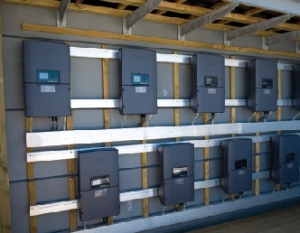 String Inverters have a proven trajectory. Because of their established reliability, accessibility and high efficiency, they remain well-suited for most residential and small commercial systems under performance incentives. With added competition from micro-inverters and two-stage inverter systems, solar string inverter designers continue to make advancements in efficiency and power density using new and better components and topology innovation. In addition, they also face the demand to provide improved grid management and safety functions. Enhancing power control features, providing environmental data analytics, and addressing serial arc fault circuit interruption are challenges facing every solar string inverter designer.
String Inverters have a proven trajectory. Because of their established reliability, accessibility and high efficiency, they remain well-suited for most residential and small commercial systems under performance incentives. With added competition from micro-inverters and two-stage inverter systems, solar string inverter designers continue to make advancements in efficiency and power density using new and better components and topology innovation. In addition, they also face the demand to provide improved grid management and safety functions. Enhancing power control features, providing environmental data analytics, and addressing serial arc fault circuit interruption are challenges facing every solar string inverter designer.
 Central Inverters are typically floor or ground mounted, as opposed to string inverters, which are typically installed on a wall or other vertical structure. They range in power from around 50kW to over 1MW and can be designed for indoor or outdoor use. The simplest architecture of a central inverter consists of a single DC-AC conversion stage. Some inverters have a DC-DC boost stage to increase the MPP voltage range. In some cases, a low frequency transformer is provided at the output to boost the AC voltage and provide isolation. However, this decreases the efficiency and increases the size, weight and cost of the inverter. The trend is to use transformerless inverters in commercial installations with a front-end boost stage if required.
Central Inverters are typically floor or ground mounted, as opposed to string inverters, which are typically installed on a wall or other vertical structure. They range in power from around 50kW to over 1MW and can be designed for indoor or outdoor use. The simplest architecture of a central inverter consists of a single DC-AC conversion stage. Some inverters have a DC-DC boost stage to increase the MPP voltage range. In some cases, a low frequency transformer is provided at the output to boost the AC voltage and provide isolation. However, this decreases the efficiency and increases the size, weight and cost of the inverter. The trend is to use transformerless inverters in commercial installations with a front-end boost stage if required.
Webinars:
Watch Solar Power World webinars on solar inverters free! (Tweet This)
 The State of the Utility-Scale Solar Inverter with Advanced Energy and Swinerton
The State of the Utility-Scale Solar Inverter with Advanced Energy and Swinerton
Join us for a special 1-hour presentation in which a major OEM will discuss how utility-scale solar inverter technology and standardization is changing. Also, one of Solar Power World’s Top 100 Solar Contractors will share case studies that demonstrate considerations such as safety, operations & maintenance and grid connection for choosing the right inverter for your utility solar installation. Watch now
 Residential Solar Inverter Crash Course with SolarBridge Technologies, Outback Power and Solectria Renewables
Residential Solar Inverter Crash Course with SolarBridge Technologies, Outback Power and Solectria Renewables
Join us for a special one-hour presentation in which industry experts will discuss inverter basics and advantages of using string, off-grid and microinverters. You’ll leave the webinar with a better handle on inverter considerations and be ready to choose the right type for your residential system. Watch now
 Commercial Solar Inverter Crash Course with SMA, Joule Energy and Enphase
Commercial Solar Inverter Crash Course with SMA, Joule Energy and Enphase
Join us for a special one-hour presentation in which industry experts will discuss inverter basics and advantages of using string, central and microinverters. Listen to inverter selection challenges in a case study from one who has been there. You’ll leave the webinar with a better handle on inverter considerations and be ready to choose the right type for your commercial system. Watch now
 The ABCs Of Utility-Scale Inverters with AETI and Advanced Energy
The ABCs Of Utility-Scale Inverters with AETI and Advanced Energy
As the renewable energy boom around the world continues to grow, larger utility-scale projects are becoming the norm. Sometimes the inverter piece of the project gets lost in the weeds. To help sort out the specifics of this growing segment of the industry Kent Breaux, Global Director of Renewable Markets for AETI and Zach Ward, Director of Utility Sales and Business Development, North America at Advanced Energy discuss them. Watch now

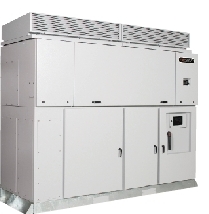
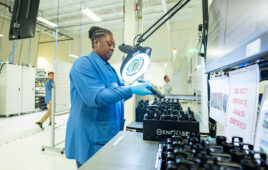

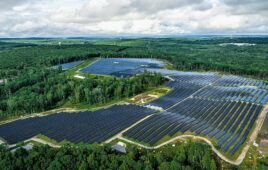

Hi sir,
I’m planning for on grid PV system on my roof top. The system has dedingned for a generation of 16kW. Each panel can generate 100w/h. Sir will please guide me about the size of micro inverter…
most of the quesries revolve around whether to go for string inveters or central. That actually requires some more knowledge of the electrical requirements? Can that be explained.
This is a top 10 article???
Can you help? I am looking to have 16 Sharp 245 PV panels (3.92kW)installed but am not sure which inverter to choose between, the Fronius IG TL 4.0 or the Sunny boy 4000TL. Both have similar efficency however, the main difference (as far as I can see) is the MPP Voltage range which is 350-700v for the Fronius and 125-440v for the Sunny boy. With the voltage range of this PV array being 392-510v should I avoid the Sunnyboy?